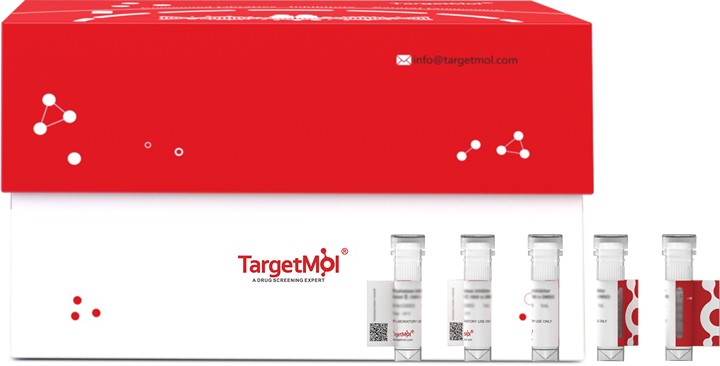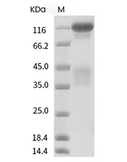Shopping Cart
- Remove All
 Your shopping cart is currently empty
Your shopping cart is currently empty

Insulin Receptor Protein, Human, Recombinant (long isoform, His) is expressed in HEK293 mammalian cells with His tag. The predicted molecular weight is 107 kDa and the accession number is P06213-1.

| Pack Size | Price | Availability | Quantity |
|---|---|---|---|
| 100 μg | $386 | In Stock | |
| 200 μg | $682 | 7-10 days | |
| 500 μg | $1,440 | 7-10 days |
| Biological Activity | Activity testing is in progress. It is theoretically active, but we cannot guarantee it. If you require protein activity, we recommend choosing the eukaryotic expression version first. |
| Description | Insulin Receptor Protein, Human, Recombinant (long isoform, His) is expressed in HEK293 mammalian cells with His tag. The predicted molecular weight is 107 kDa and the accession number is P06213-1. |
| Species | Human |
| Expression System | HEK293 Cells |
| Tag | C-His |
| Accession Number | P06213-1 |
| Synonyms | insulin receptor,HHF5,CD220 |
| Construction | A DNA sequence encoding the human INSR isoform long (NP_000199.2) extracellular domain (Met1-Lys956) was expressed fused with a polyhistidine tag at the C-terminus. Predicted N terminal: His 28 & Ser 763 |
| Protein Purity | > 95 % as determined by SDS-PAGE  |
| Molecular Weight | 107 kDa (predicted); 110-125 kDa & 40-45 kDa (reducing condition, due to glycosylation) |
| Endotoxin | < 1.0 EU/μg of the protein as determined by the LAL method. |
| Formulation | Lyophilized from a solution filtered through a 0.22 μm filter, containing PBS, pH 7.4. Typically, a mixture containing 5% to 8% trehalose, mannitol, and 0.01% Tween 80 is incorporated as a protective agent before lyophilization. |
| Reconstitution | A Certificate of Analysis (CoA) containing reconstitution instructions is included with the products. Please refer to the CoA for detailed information. |
| Stability & Storage | It is recommended to store recombinant proteins at -20°C to -80°C for future use. Lyophilized powders can be stably stored for over 12 months, while liquid products can be stored for 6-12 months at -80°C. For reconstituted protein solutions, the solution can be stored at -20°C to -80°C for at least 3 months. Please avoid multiple freeze-thaw cycles and store products in aliquots. |
| Shipping | In general, Lyophilized powders are shipping with blue ice. |
| Research Background | INSR (Insulin receptor), also known as CD22, is a transmembrane receptor that is activated by insulin. INSR belongs to the protein kinase superfamily and exists as a tetramer consisting of two alpha subunits and two beta subunits linked by disulfide bonds. The alpha and beta subunits are encoded by a single INSR gene, and the beta subunits pass through the cellular membrane. As the receptor for insulin with tyrosine-protein kinase activity, INSR associates with downstream mediators upon binding to insulin, including IRS1 (insulin receptor substrate 1) and phosphatidylinositol 3'-kinase (PI3K). IRS-1 binding and phosphorylation eventually lead to an increase in the high-affinity glucose transporter (Glut4) molecules on the outer membrane of insulin-responsive tissues. INSR isoform long and isoform short are expressed in the peripheral nerve, kidney, liver, striated muscle, fibroblasts and skin, and is found as a hybrid receptor with IGF1R which also binds IGF1 in muscle, heart, kidney, adipose tissue, skeletal muscle, hepatoma, fibroblasts, spleen, and placenta. Defects in Insulin Receptor/INSR are the cause of Rabson-Mendenhall syndrome (Mendenhall syndrome), insulin resistance (Ins resistance), leprechaunism (Donohue syndrome), and familial hyperinsulinemic hypoglycemia 5 (HHF5). It may also be associated with noninsulin-dependent diabetes mellitus (NIDDM). |

Copyright © 2015-2025 TargetMol Chemicals Inc. All Rights Reserved.